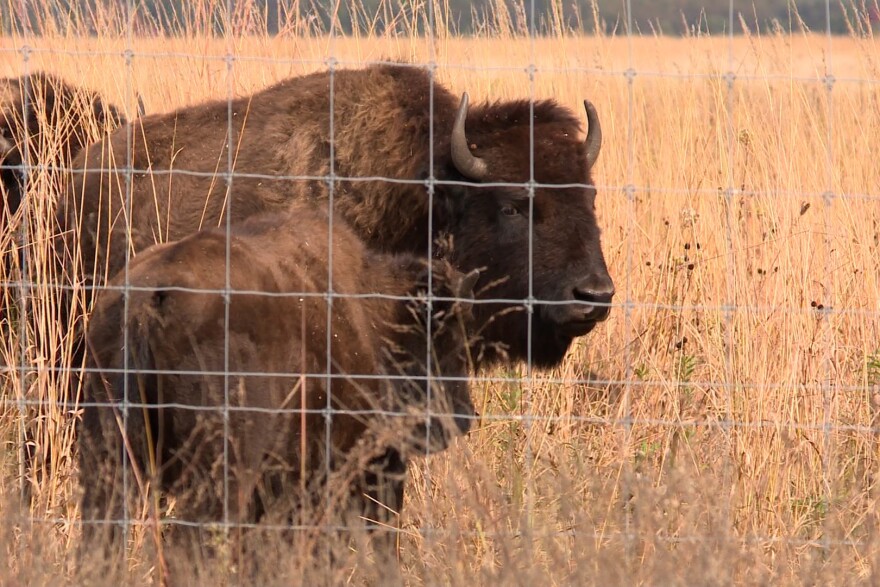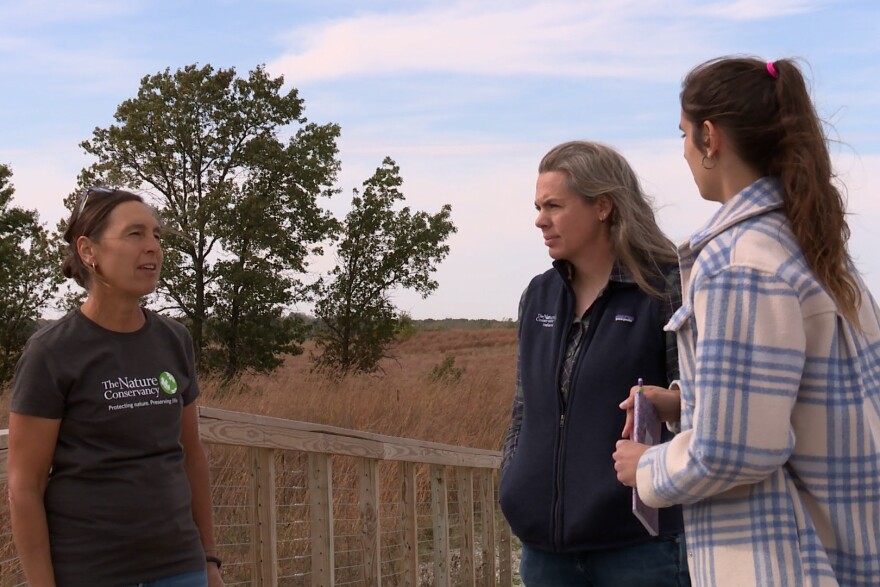Indiana University isn’t the only place bringing back the bison. One IU alumna has been working for over 20 years to preserve a bison herd in Northwest Indiana.
Alyssa Nyberg, who graduated from the IU O’Neill School of Public and Environmental Affairs, is now the preserve coordinator at the Efroymson Prairie at Kankakee Sands, land that is owned and managed by the Indiana chapter of the Nature Conservancy. Nyberg started at the prairie over 20 years ago when it was still an agricultural landscape with corn and soybeans. She has been working ever since converting it to a prairie.
“That means picking an awful lot of seeds and sowing those seeds on the land, and then after vegetating the area, you need to take good care of it,” she said. “So that's coming in to manage the invasive plants, the plants that you don't want there.”
Nyberg brought in the first 23 bison in 2016 from South Dakota. In 2017, she brought in another 10. The last time they brought in another 10 bison was in 2021. Now, over 100 bison graze about 1,000 of the 8,400 acres that make up Kankakee Sands.
“Bison are a keystone species of the prairie, so their actions affect so many other species,” she said. “They can really help to keep a prairie system healthy and thriving.”
Bison Manager Olivia Schouten said bison encourage plant diversity, helping birds, reptiles and insects to flourish. When bison wallow, or roll around on dry ground, they create shallow dips in the land, collecting rain that attracts animals and allows more plants to grow.

“They're eating up to 40 pounds of grass a day,” Schouten said. “And when you're in a grassland like we have here in Indiana with tall grass prairies, we have a lot of really tall, robust grasses that if they're able to just grow without something to kind of keep them in check, they could take over and maybe push out some of our other native plant species.”
Schouten said they bring in new bison to maintain genetic diversity and encourage resilience as a species. In the mid 1800’s, the number of bison in the country plummeted from about 30 million to under 1,000. The number of bison has since grown through conservation efforts to about 2,000 bison in Indiana.
“They went through what is called a bottleneck. So, they did lose, potentially, some of their genetic diversity that they had as a species when that happened,” she said. “And so, as that population has grown and expanded, they've been protected from extinction, but we still need to ensure that we are allowing animals to move between each other so that they don't just become too related over time.”
When managing the bison, Schouten takes a hands-off approach. She mainly makes sure the bison have access to food, water and space to roam. While Schouten plans to bring in more bison in the future, her goal is to make sure they have a population size that matches the amount of grass available for feed.
“A lot of it is watching them and just keeping an eye out, and if we see something that we maybe need to help them out with, we'll talk with the vet about that,” she said. “But for the most part, if they have space, the ability to socialize with each other, they are really healthy and resilient.”

Nyberg said she finds it important to restore prairies and get people out into nature. Prairies used to cover about 15 percent of the state; now, prairies cover only one percent of the state.
“It just feels so good to be outside, to be able to witness the beauty of nature and to see the positive impact that people can have in a place,” she said. “When they decide that, yeah, we're going to put our minds to do something that we haven't done before, and we're going to make a positive difference.”
Nyberg and Schouten are excited about the bison’s return as IU’s mascot, and hope the increased attention to the animal will bring more people out to the prairie.
“It really does, I think, just go to show more people are realizing and remembering that bison are part of Indiana's natural history. They are part of the school's history. They're part of the state's history,” Schouten said. “And so just seeing that in different places, being brought back here is really cool.”



